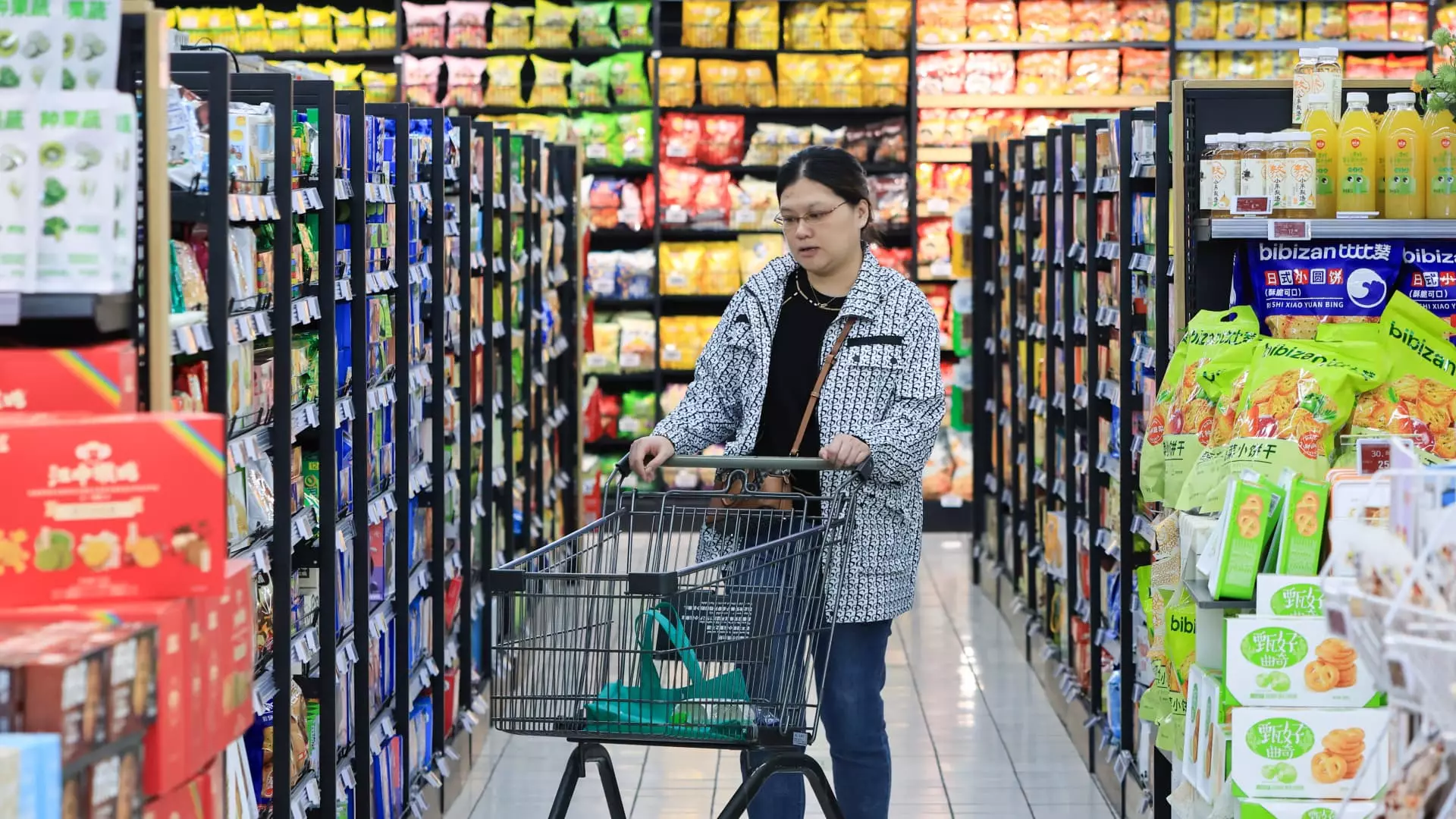China’s recent economic data indicates a concerning trend in consumer inflation, which has dropped to its lowest level in five months. The National Bureau of Statistics reported that consumer prices rose merely 0.2% year-on-year in November, failing to meet the expectations set by analysts who had predicted an increase to 0.5%. This marks a significant halt in the anticipated economic recovery, with inflation rising from 0.3% in October, but still falling short of the optimistic forecasts. In contrast, core inflation, which omits volatile components like food and energy, climbed to 0.3%, a subtle growth from 0.2% the previous month. This scenario indicates that broader consumer spending remains lackluster, potentially influenced by global economic pressures and domestic challenges.
While the overall inflation rates paint a picture of stagnation, specific sectors show considerable price growth, particularly in the food category. Pork prices soared by 13.7%, and fresh vegetable prices by 10%. This sharp increase in food prices contradicts the overall inflation trend and highlights an uneven economic landscape. The significant price hikes in essential items suggest shifting consumer behavior and prioritize spending on food, which could imply a diversion of resources away from discretionary items, further complicating the recovery narrative.
On the wholesale front, China’s Producer Price Index (PPI) has been on a downward trajectory for 26 consecutive months, illustrating entrenched deflation. November’s producer inflation fell by 2.5%, slightly better than the predicted 2.8% drop. A closer examination reveals that prices for ferrous metals fell by 7.1%, alongside declines in fuel and chemical raw materials. Erica Tay from Maybank notes that abundant inventories of manufacturing inputs and finished goods exacerbate the already concerning supply-demand mismatch. This situation suggests a potential oversupply in the market, which could lead to further price decreases if demand does not increase accordingly.
Despite a variety of stimulus measures implemented by the Chinese government since September—such as interest rate cuts and targeted support for the stock and property markets—the persistent low inflation rates and deflationary pressures signal an ongoing struggle with domestic demand. Analysts like Becky Liu of Standard Chartered predict that deflationary trends will persist in the coming years, particularly in response to the ongoing trade tensions with the United States, which have historically correlated with declining inflation rates.
Amidst these financial uncertainties, certain indicators within China’s economy point toward potential recovery. October’s retail sales surprised analysts by exceeding expectations, while manufacturing activity reported consecutive expansions in November. Despite these positive signs, the overarching narrative remains one of cautious optimism, particularly in light of recent revisions to GDP growth forecasts. Fitch Ratings has reduced its growth outlook for 2025 and 2026, reflecting the challenges posed by evolving trade policies and the lingering impact of the property market crisis.
As China heads into the Central Economic Work Conference, where leaders will determine economic goals and additional stimulus measures for 2025, the economic outlook remains complex and volatile. The juxtaposition of stagnating consumer inflation, persistent producer deflation, and emerging signs of recovery creates a challenging environment for policymakers. With the economy struggling against external pressures and domestic demand issues, the path forward will necessitate strategic planning and robust interventions to foster sustainable growth and alleviate the burdens of deflation. In times of uncertainty, a nuanced understanding of these dynamics will be crucial for navigating China’s economic future.

Leave a Reply